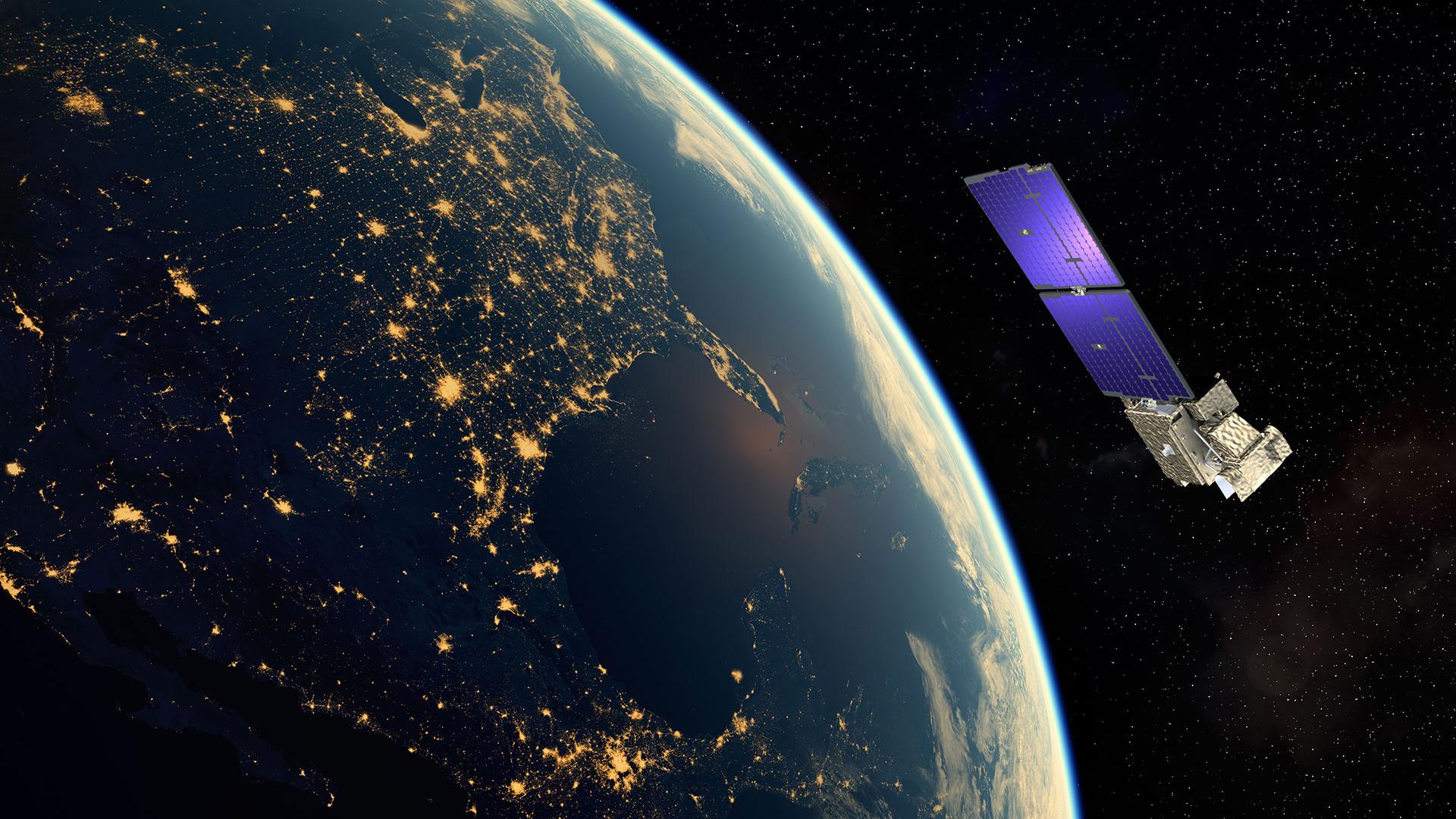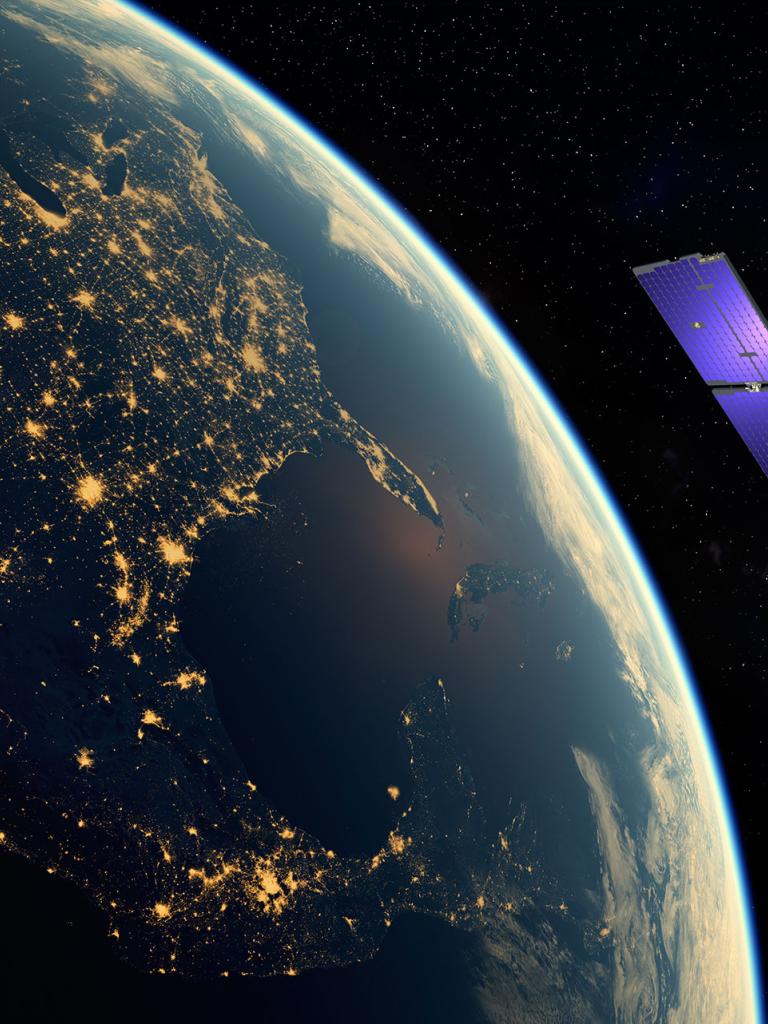04 July 2024
27 June 2024
About
The Arctic Weather Satellite (AWS) was approved at the European Space Agency (ESA) Council meeting at the Ministerial level in November 2019 as a new Earth Watch Programme Element. AWS is planned for launch in July 2024 and is seen as a prototype for a future constellation of microwave sounding satellites (EPS Sterna) to support global and regional Numerical Weather Prediction (NWP) and nowcasting at high latitudes. EUMETSAT has now begun defining such a constellation under the EPS-Sterna Programme. EPS-Sterna would complement existing polar orbiting systems (JPSS and Metop) and improve temporal sampling globally, especially at high latitudes.
Objectives
The primary goal of the study is to assess the value of EPS-Sterna for precipitation nowcasting at high latitudes. A purely data-driven model is utilized for this purpose. The model is trained with time series data from the Baltrad ground-based weather radar network around the Baltic Sea and collocated passive microwave (PMW) data from existing microwave sounders. It is designed to predict radar data from time series of PMW data. The sounders provide a temporal sampling that varies significantly throughout the day. Whilst this variation is undesirable for operational nowcasting, it allows us to use the model and available data to assess the sensitivity of prediction performance to temporal sampling. This sensitivity can then be used to obtain a first-order estimate of the overall value of EPS-Sterna for precipitation nowcasting in the area considered.
The study focuses on precipitation nowcasting using PWM data within the area covered by the Baltrad radar network. Although radar data and geostationary satellite imagery can be used for precipitation nowcasting in this region, this study does not cover those methods. However, the implementation of the EPS-Sterna mission would enable precipitation nowcasting in regions not covered by ground based radar networks or geostationary satellite imagery. The Baltrad network area was chosen due to data availability, and it is assumed that the derived value of EPS-Sterna for precipitation nowcasting can be extrapolated to regions beyond the study area to some extent.
Overview
Precipitation nowcasting involves providing very short-range (e.g. a few hours) forecasts of the precipitation intensity in a local region, and can play a vital role in many real-world applications. Traditionally, operational nowcasting methods use ground-based weather radar data within an advection scheme, often struggling to capture non-linear events. The use of machine learning techniques to predict future rain rates from radar data without physical constraints has been a hot topic in recent years. Despite microwave sounders providing highly relevant data for precipitation nowcasting, little attention has been paid to using such data within a machine learning framework for this purpose. A fundamental reason for this lack of attention is that the current operational sounders provide poor temporal sampling during certain periods of the day, making them unsuitable for nowcasting applications. The implementation of the EPS-Sterna mission would change the situation, and could, in theory, enable precipitation nowcasting in regions not covered by ground-based radar networks or geostationary satellite imagery.
This study assesses the impact of EPS-Sterna on precipitation nowcasting for Northern Europe using a purely data-driven model. The model was trained to predict data from a ground-based weather radar network in the Baltic Sea Region, utilizing data from PMW sensors of the current weather satellite system, specifically the AWS heritage sounders. The short-range (≤ 4 hours) forecasting performance of the model was evaluated for a summer and a winter period, over an ocean and a mountainous area, and during times of the day when the current polar orbiting systems provide a good (EPS-Sterna like) data coverage.


The prediction performance was found to vary with the period and surface type. The best performance was obtained for May, particularly over ocean, with a rain probability of detection (POD) of 0.75/0.55 and a false alarm rate (FAR) of 0.2/0.3 for forecasts with lead times of 15/240 minutes. In December, the performance was significantly lower with a POD of 0.6/0.4 and a FAR 0.4/0.5 for the same lead times. Additionally, the model provided better performance than a persistence forecast for all considered performance indicators.


The impact of data from one satellite sensor on the model’s prediction was assessed, serving as a proxy for the benefits of adding data from an additional sensor. The influence of EPS-Sterna data on the model prediction performance varies throughout the day due to the uneven coverage of the current polar orbiting systems over the study area. Some hours have relatively fine sampling intervals, while others have large data gaps.
The forecasting performance is expected to improve by approximately 5% during periods of the day when EPS-Sterna data closely aligns with other observations. However, the most significant performance gains occur when EPS-Sterna fills gaps where no data is available for several hours. This allows for forecasts with significantly shorter lead times, estimated to improve performance by about 20% when lead times can be reduced by 120 minutes.


The EPS-Sterna enhances the data-driven precipitation nowcasting approach presented in this study by enabling frequent forecast updates with consistent prediction performance throughout the day. This results in an improvement of approximately 5% to 20 % during periods when EPS-Sterna data is available.

